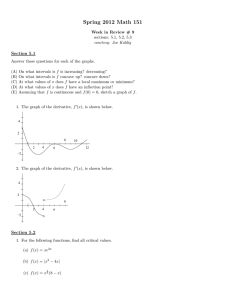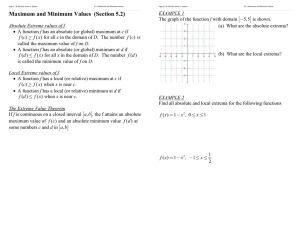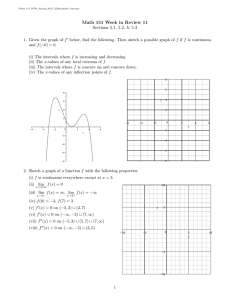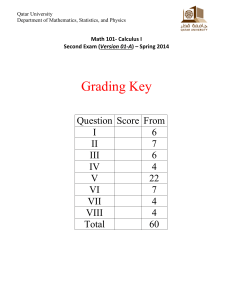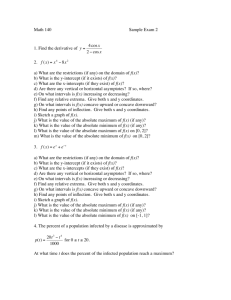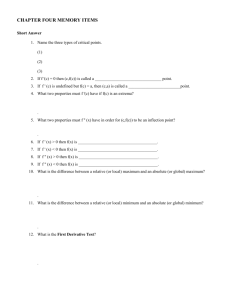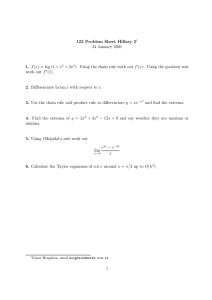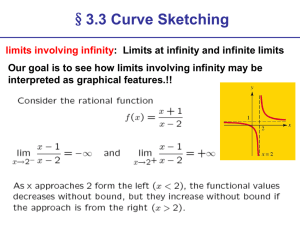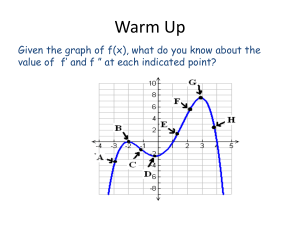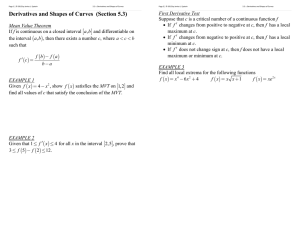( ) 5.3: Extrema, Inflection Points, and Graphing critical number
advertisement
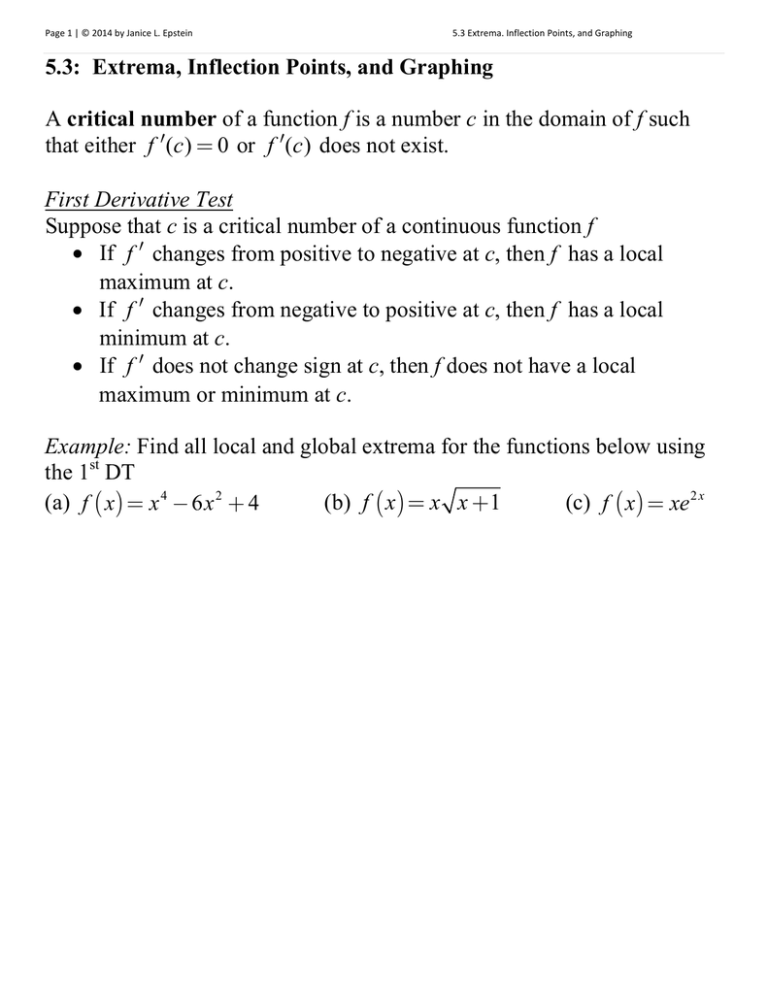
Page 1 | © 2014 by Janice L. Epstein 5.3 Extrema. Inflection Points, and Graphing 5.3: Extrema, Inflection Points, and Graphing A critical number of a function f is a number c in the domain of f such that either f ¢(c) = 0 or f ¢(c) does not exist. First Derivative Test Suppose that c is a critical number of a continuous function f If f ¢ changes from positive to negative at c, then f has a local maximum at c. If f ¢ changes from negative to positive at c, then f has a local minimum at c. If f ¢ does not change sign at c, then f does not have a local maximum or minimum at c. Example: Find all local and global extrema for the functions below using the 1st DT (a) f ( x ) = x 4 - 6 x 2 + 4 (b) f ( x) = x x + 1 (c) f ( x ) = xe 2 x Page 2 | © 2014 by Janice L. Epstein 5.3 Extrema. Inflection Points, and Graphing Second Derivative Test Suppose f ¢¢ is continuous near c. If f ¢ (c ) = 0 and f ¢¢ (c ) > 0 , then f has a local minimum at c If f ¢ (c ) = 0 and f ¢¢ (c ) < 0 , then f has a local maximum at c Example: Use the 2nd DT to find the local extrema for the functions (b) f ( x) = x x + 1 (c) f ( x ) = xe 2 x (a) f ( x ) = x 4 - 6 x 2 + 4 Page 3 | © 2014 by Janice L. Epstein 5.3 Extrema. Inflection Points, and Graphing Checklist for Graphing a Function A.Use f ( x ) to 1) Determine the domain of the function and the intervals on which the function is continuous 2) Find all horizontal or oblique asymptotes 3) Find vertical asymptotes 4) Find x and y-intercepts B. Use f ¢ ( x ) to 5) Find the critical values 6) Find intervals where the function is increasing and decreasing 7) Find all relative extrema 8) Find all global extrema with information from A and B6 C. Use f ¢¢ ( x) to 9) Find intervals where the function is concave up and concave down 10) Find all inflection points. A line y mx b is an oblique asymptote if lim éë f ( x ) - (mx + b)ùû = 0 x¥ 3x3 x 2 6 x 4 Example: Does f x have an oblique asymptote? If x2 2 yes, what is it? Page 4 | © 2014 by Janice L. Epstein 5.3 Extrema. Inflection Points, and Graphing Example: Sketch f ( x ) = x 4 - 6 x 2 + 4 and f ( x) = x ( x -1) 2
